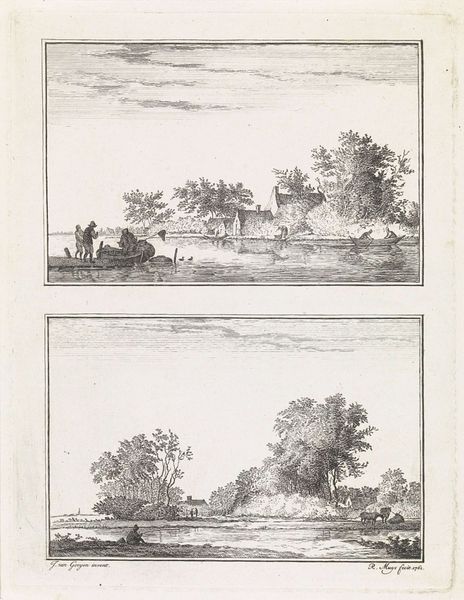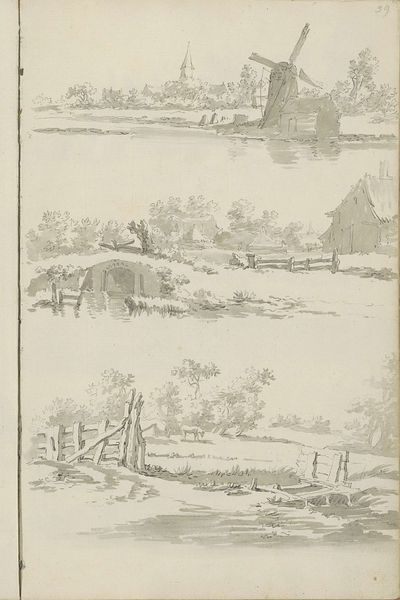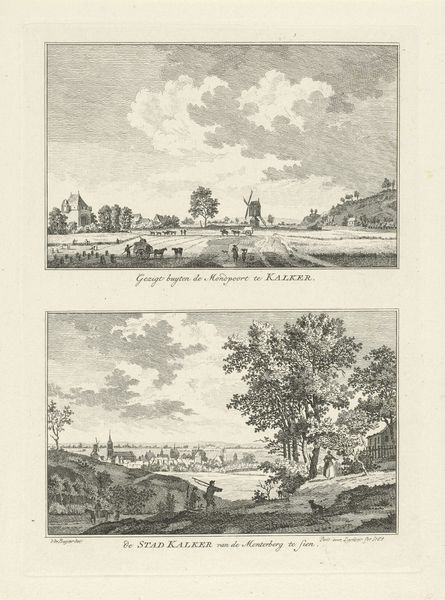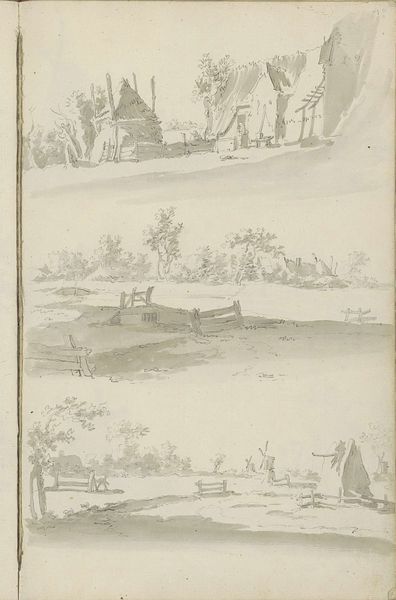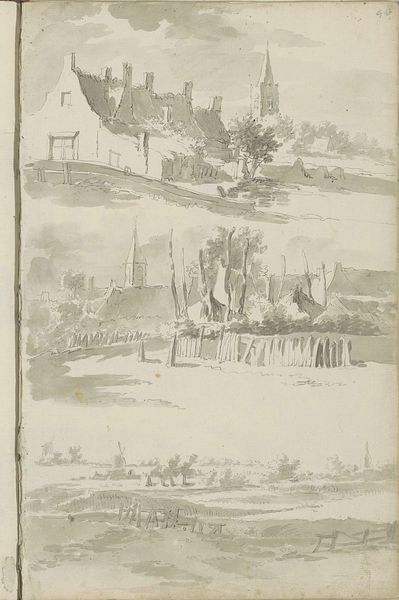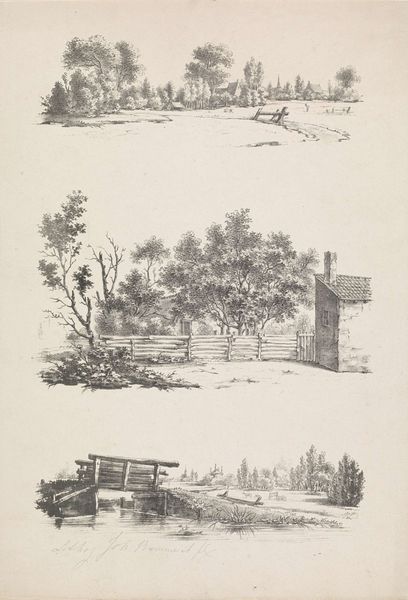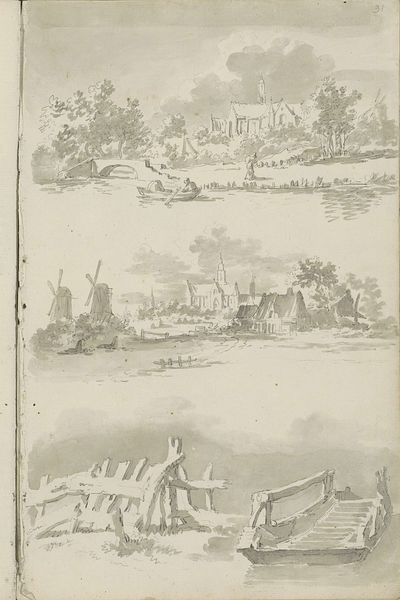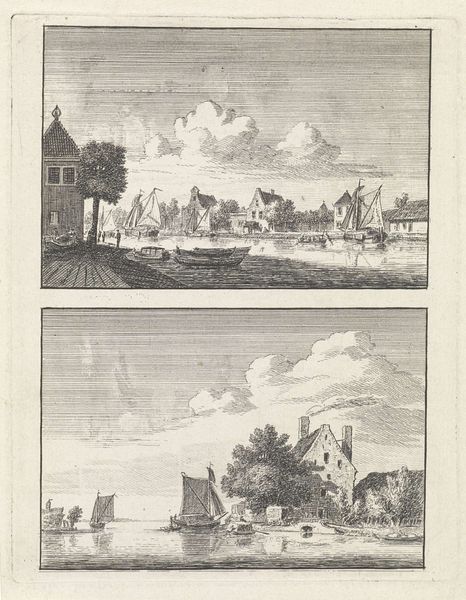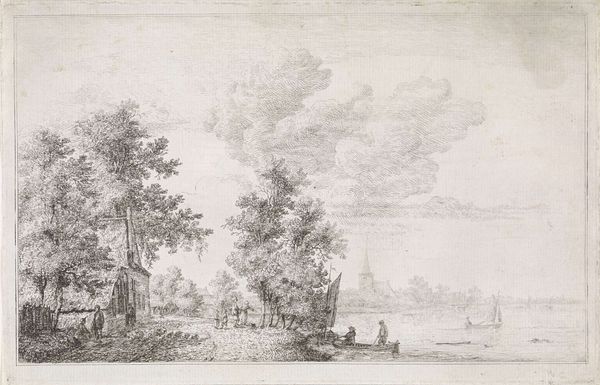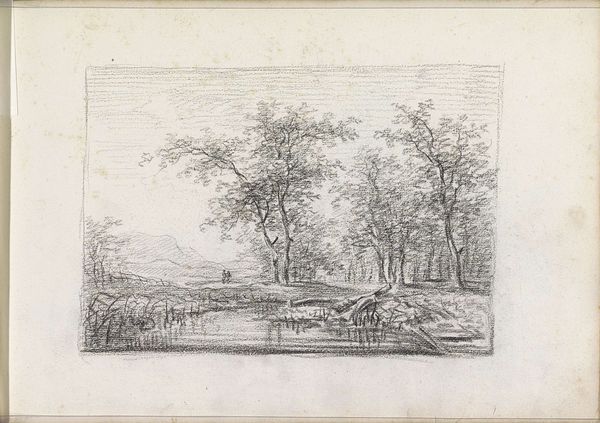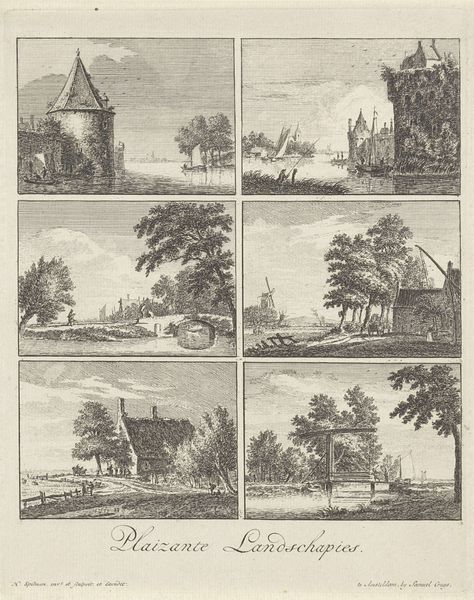
Dimensions: height 215 mm, width 165 mm
Copyright: Rijks Museum: Open Domain
Curator: Here we have "Twee waterlandschappen," or "Two Water Landscapes," an etching created by Robbert Muys in 1761. It's part of the Rijksmuseum's collection. Editor: It strikes me as such a peaceful piece. There’s a delicate tranquility in the fine lines; a sort of dreamy stillness, almost like peering into a memory. Curator: Absolutely. Water is such a potent symbol of memory and reflection. Here, Muys offers two perspectives on that idea. The Dutch Golden Age was obsessed with landscapes. These detailed prints made such views accessible to wider audiences. I am struck by the image in the lower panel that suggests an entire world is concentrated along that waterside, from the church to the boats and the houses...all bathed in light and memory. Editor: I see that sense of miniaturization. And it echoes broader traditions too. Water imagery historically signifies transitions—journeys between worlds. Are those small figures I spy in the lower image transformed, changed? Muys packs such cultural and psychological weight into these diminutive forms. Curator: That's such a thoughtful way of looking at it. Do you notice how the clouds in the upper panel are rendered almost horizontally, like wisps, while in the bottom they're more diffuse and turbulent? It subtly alters the mood of each. Maybe an exploration into temperaments of melancholy and placidity. Editor: Precisely. This visual duality resonates; it's about internal states projected onto external scenery. Light becomes a character in itself here. Each flicker a secret language. It almost evokes something… ancestral? A dreamscape of home? The clouds become part of this intimate language that speaks about home. The details like these thatched roofs or these modest sail boats create that feeling, don’t you think? Curator: Yes, they root the image firmly in the Dutch Golden Age. So, although the water takes the symbolic weight of journeys between worlds as you point out, there is also something about familiarity, which creates intimacy. And so, even if at first you’re lured away by the horizontal format, you’re brought back by the landscape into something human, personal… domestic, almost. Editor: Agreed, it’s a gentle reminder. It's so fascinating how such modest means can still resonate today. Perhaps that’s its most lasting impact; the personal intimacy Muys conjures between us and a past now almost unfathomable.
Comments
No comments
Be the first to comment and join the conversation on the ultimate creative platform.
